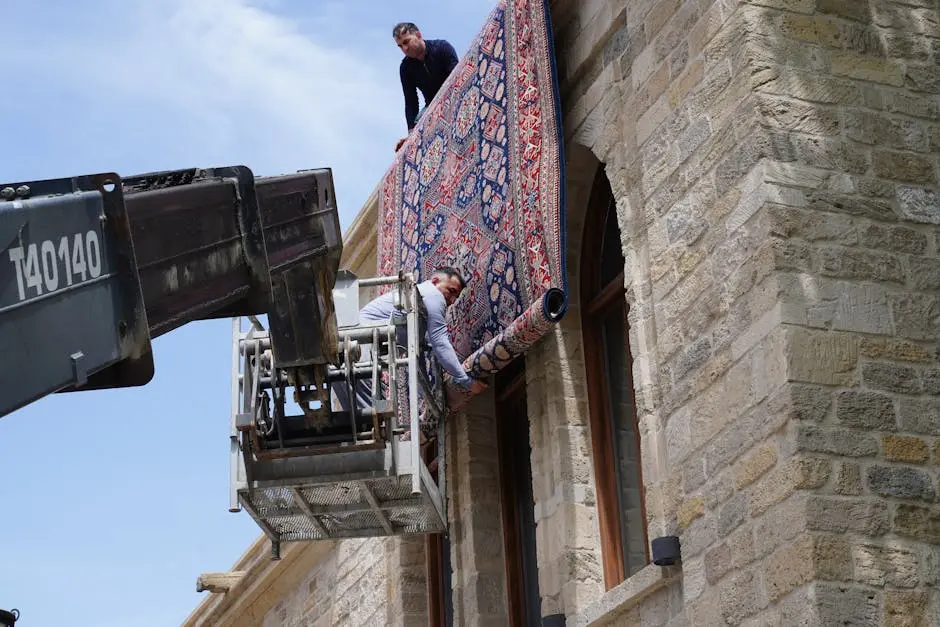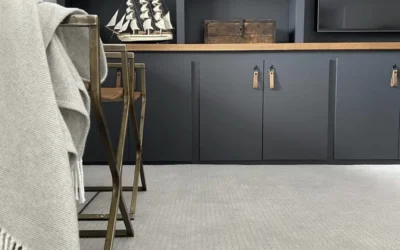Finding the perfect carpet installation that marries both style and durability can feel overwhelming, given all the choices available today. But fear not! This blog will guide you through the process with easy-to-understand tips and insights to help you make an informed decision.
Understanding Different Types of Carpet Materials
From wool to nylon, polyester to olefin, each carpet material offers unique benefits and considerations. Wool, for instance, is a natural fiber known for its luxurious feel and excellent insulating properties. It’s also eco-friendly, being biodegradable and renewable. However, it requires more maintenance to keep it looking pristine. On the other hand, nylon is a popular synthetic fiber recognized for its strength and resilience. It’s ideal for areas with heavy foot traffic due to its ability to resist a lot of the wear and tear. Polyester, meanwhile, offers vibrant colors and is resistant to fading, making it a great choice for sunlit rooms. Olefin is moisture-resistant and can be a budget-friendly option, but it lacks the softness of other materials. Understanding these differences can help you match your carpet material to the specific needs of each room.
Consider also the environmental impact of your chosen material. For example, carpets made from recycled materials not only help reduce waste but also provide durability. Assessing the material impact and care requirements can narrow down your choices significantly, allowing you to align your preferences with your lifestyle and values.
Exploring Carpet Styles and Patterns
Carpet styles and patterns hold the power to dramatically transform your space, adding both visual interest and functional benefits. Plush carpets are thick and dense, providing a soft and luxurious feel underfoot that works beautifully in bedrooms and living areas. For areas with potential high traffic or spills, Berber-style carpets are a solid option due to their durability and ability to hide stains well with their looped fiber design.
Frieze carpets, with their tightly twisted fibers, offer a textured, casual look that’s excellent at camouflaging dirt and footprints. When choosing a pattern, consider geometrical designs or subtle prints that can enhance the architectural features of your home. Implementing patterns strategically can guide the viewer’s eye and even make rooms appear larger. Exploring various carpet designs equips you with creative options to personalize each space.
Considering Factors of Carpet Durability
Durability is a key consideration that ensures your carpet stands the test of time. Factors like density, twist, and pile height significantly influence durability. Density refers to the closeness of the fibers, with denser carpets tending to last longer. The twist, or how tight the fibers are twisted during production, enhances the carpet’s ability to hold up against crushing and matting. A higher twist often indicates increased durability.
The pile height, or the length of the fibers above the carpet backing, also matters. Shorter piles are generally more durable, making them ideal for high-traffic areas. Additionally, some carpets have built-in stain resistance, which boosts their durability in active households. Be sure to examine these attributes carefully to ensure your carpet is not only beautiful but also constructed to endure the demands you place upon it. Check out how these factors play in real home settings in this comprehensive guide on carpet durability.
Installation Methods and Their Impact
The choice of installation method can deeply influence both the look and lifespan of your carpet. Stretch-in installation is a common method that involves securing the carpet with tack strips along the edges, allowing it to stretch over the padding for a snug fit. This method is known for its cushioning effect and offers easy maintenance, as it can be lifted for cleaning and repairs.
Alternatively, the glue-down method provides a firm, stable base by directly adhering the carpet to the subfloor. This option limits movement and is often used in commercial settings or for tiles where additional stability is required. Choosing the right method can enhance not just the feel underfoot but also the overall aesthetic of your flooring project. For more insights on different installation methods, visit this in-depth resource.
Tailoring Choices to Your Lifestyle
Every household is unique, with its own set of requirements and preferences. For families with young children or pets, stain resistance and ease of cleaning could be top priorities. Consider a carpet with a tight weave and low pile height to better withstand spills and pet hair. If you entertain often, a more durable and forgiving pattern may suit your needs best, supporting a balance between style and practicality.
For a household that cherishes quiet and calm, a plush or frieze carpet might be desirable because it minimizes noise from footfalls and offers a soft surface for relaxation. In selecting your carpet, strive to meet your lifestyle’s demands while reflecting your personal style. Consider visiting our range of options to see what aligns with your vision.
Finding Your Perfect Carpet Match
Ultimately, choosing the right carpet installation requires a balance between aesthetics, performance, and practicality. By considering the factors we’ve discussed – materials, installation methods, and your lifestyle needs – you can ensure that your new carpet is a beautiful addition to your home for years to come.




